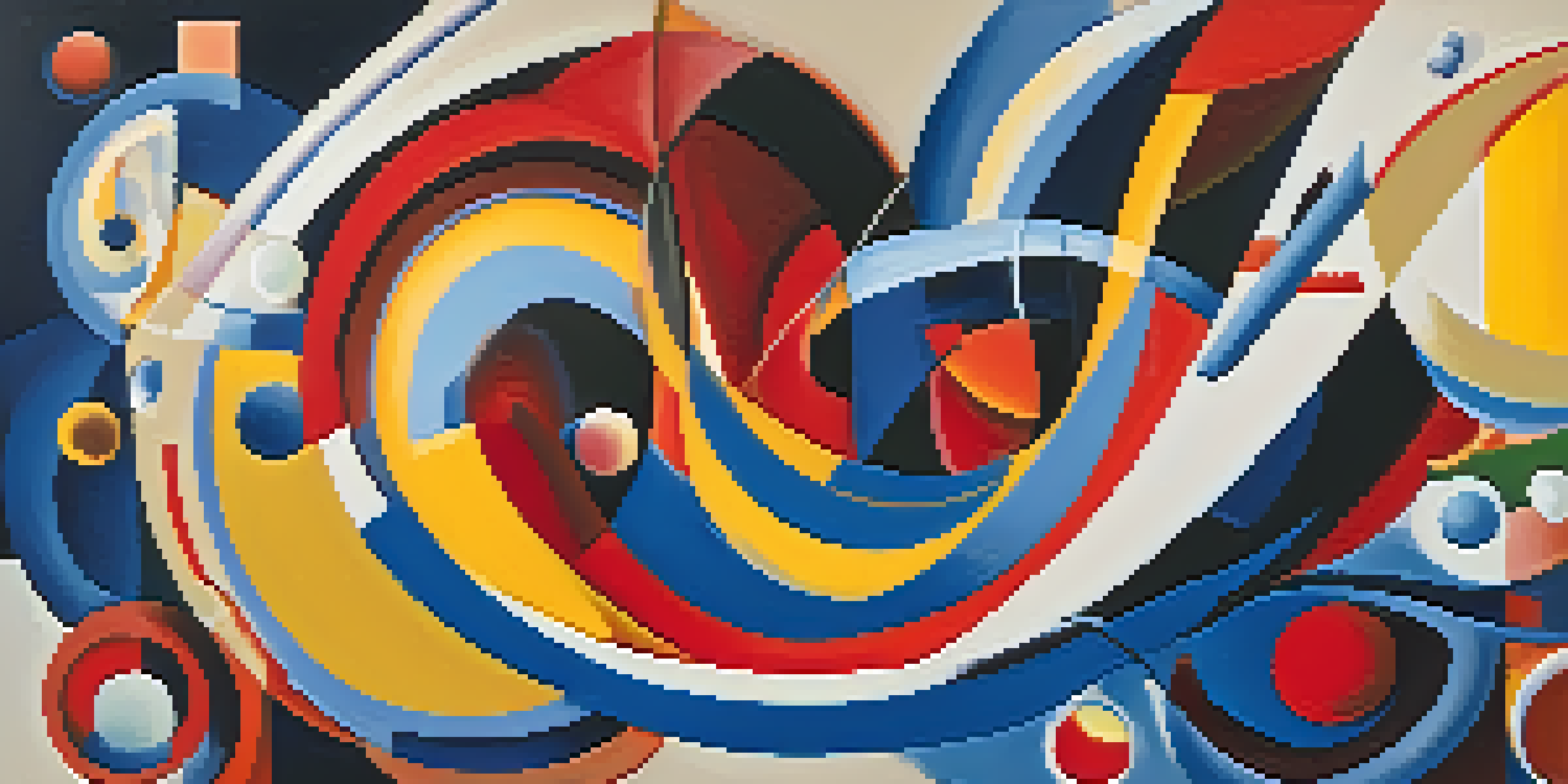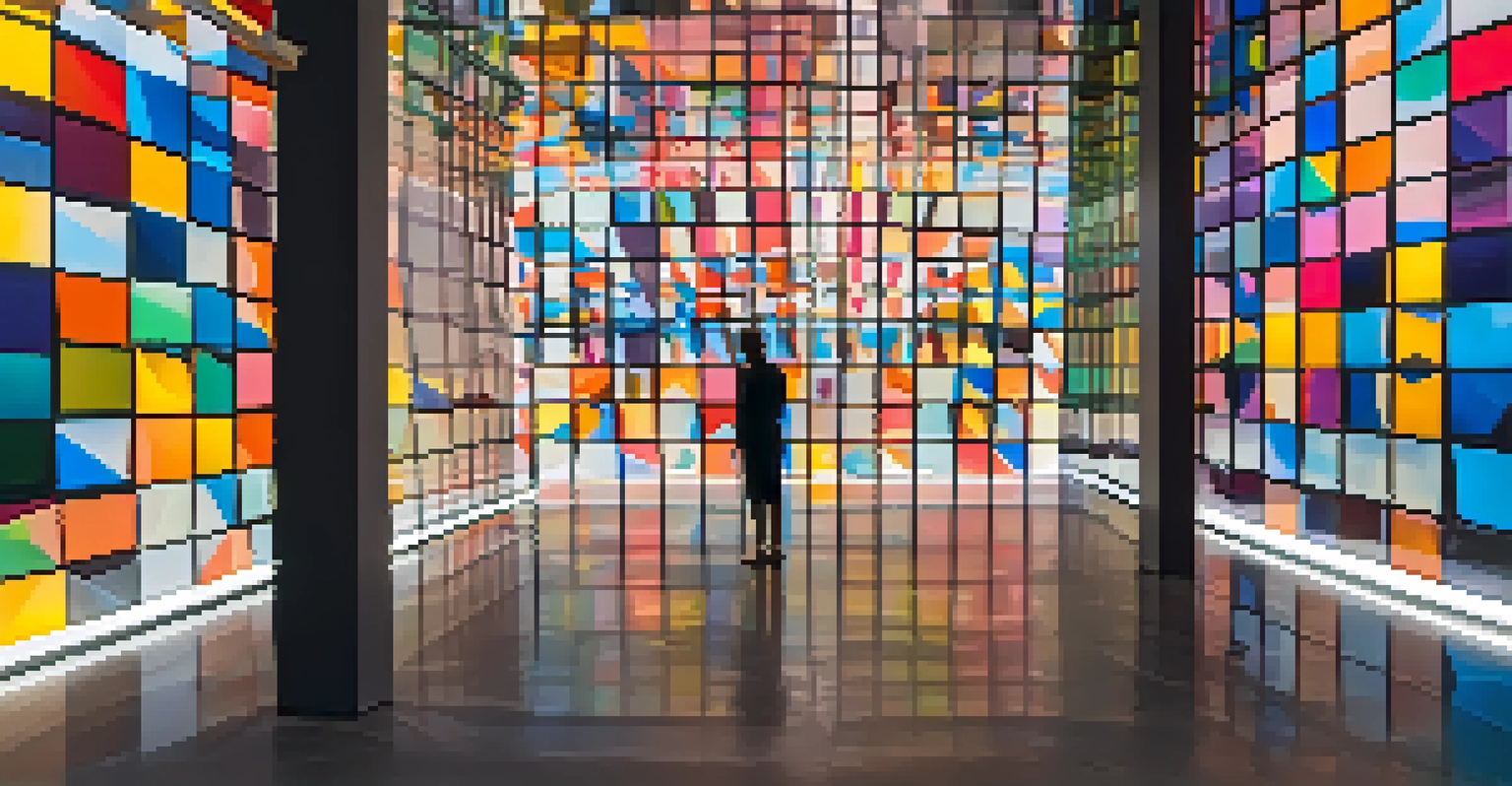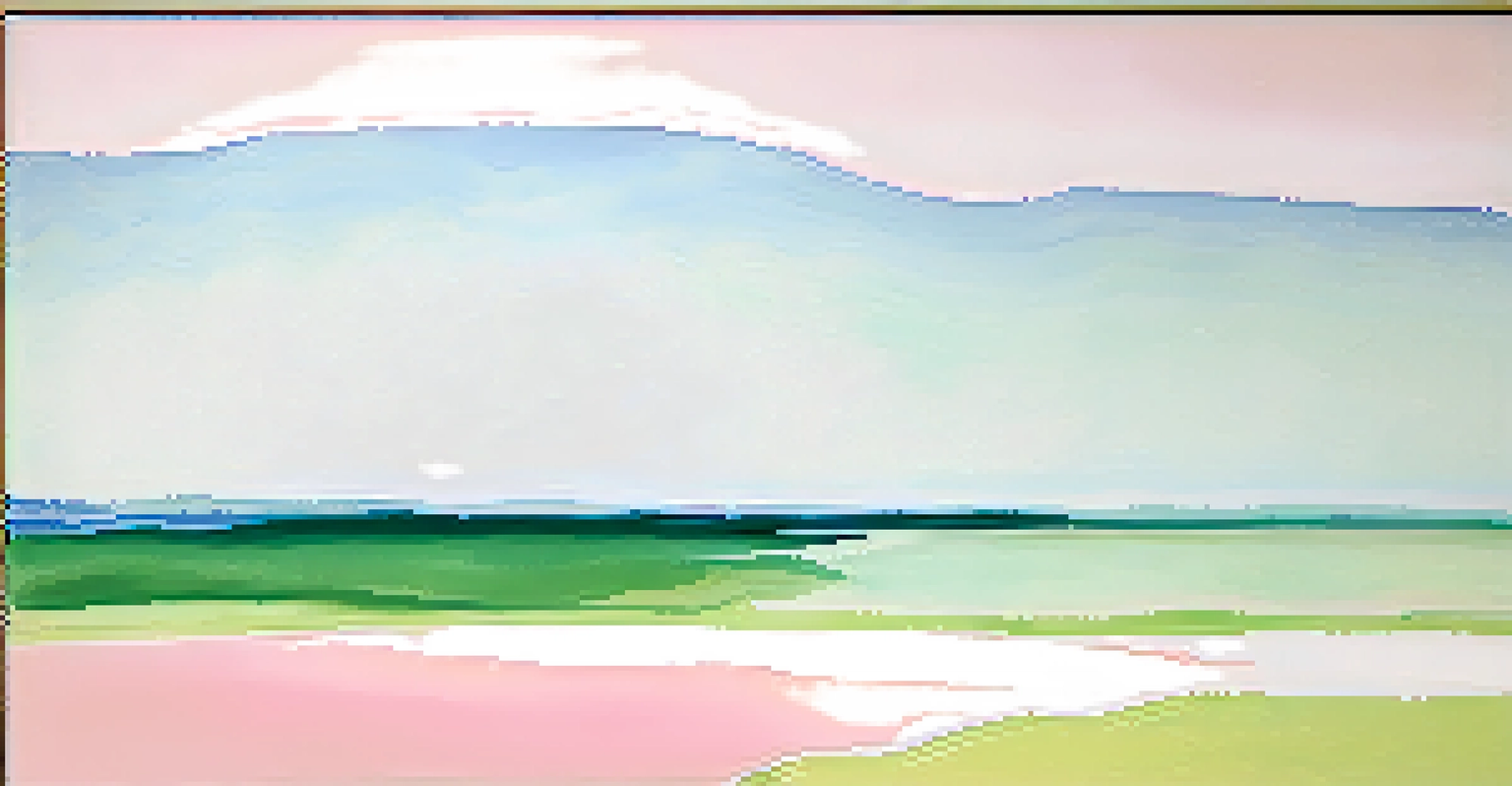The Evolution of Abstract Art Through the 20th Century

Understanding Abstract Art: A New Perspective
Abstract art emerged in the early 20th century as a radical departure from traditional forms of representation. Rather than portraying subjects realistically, artists began to explore color, form, and line as independent elements. This shift allowed for a more personal expression, inviting viewers to interpret the artwork in their own unique ways.
I am not a painter. I am a painter of emotions.
One of the pioneers of this movement, Wassily Kandinsky, believed that art should evoke emotions rather than simply mimic reality. His works often featured vibrant colors and dynamic shapes, challenging observers to engage with the piece at a deeper emotional level. This foundational idea of emotional resonance would become a cornerstone of abstract art.
Related Resource
As new artistic philosophies emerged, abstract art quickly evolved, reflecting the diverse cultural and social changes of the 20th century. The movement would go on to influence countless artists and give rise to various styles, each adding its own flavor to the abstract landscape.
The Influence of Cubism on Abstract Art
Cubism, developed by Pablo Picasso and Georges Braque in the early 1900s, played a crucial role in the evolution of abstract art. By breaking subjects down into geometric shapes and presenting multiple viewpoints simultaneously, Cubism challenged conventional perspectives. This deconstruction of form paved the way for later abstract artists to experiment with non-representational art.

For instance, artists like Fernand Léger and Juan Gris expanded on these ideas, incorporating vibrant colors and playful compositions. They showcased that abstraction could not only be thought-provoking but also visually captivating. The interplay of shapes and colors in their work contributed to a growing acceptance of abstraction within the art community.
Abstract Art Emphasizes Personal Expression
Emerging in the early 20th century, abstract art invites viewers to interpret artwork in their own unique ways, focusing on color and form instead of realistic representation.
As Cubism laid the groundwork, it encouraged artists to explore new dimensions of expression. This movement not only changed how art was created but also how it was perceived, setting the stage for the flourishing of abstract art that would follow.
The Rise of Abstract Expressionism in the 1940s
The 1940s marked a significant shift in abstract art with the emergence of Abstract Expressionism, particularly in New York City. This movement was characterized by spontaneous, gestural brushstrokes and a focus on the act of painting itself. Artists like Jackson Pollock and Mark Rothko emphasized the importance of individual expression and the emotional impact of color and form.
Art is not what you see, but what you make others see.
Pollock's iconic drip paintings exemplified this idea, transforming the canvas into a dynamic field of energy. His technique, which involved dripping and pouring paint, invited viewers to experience the raw emotion behind each stroke. This approach redefined the relationship between artist and artwork, suggesting that the process is as important as the final product.
Related Resource
As a result, Abstract Expressionism became a powerful voice in the art world, reflecting the tumultuous social and political climate of the time. It encouraged artists to break free from traditional constraints and embrace their inner emotions, leading to an explosion of creativity.
Color Field Painting: A Focus on Color and Space
In the 1950s, Color Field painting emerged as a distinct style within abstract art, emphasizing broad expanses of color as the primary means of expression. Artists like Barnett Newman and Helen Frankenthaler sought to create immersive experiences for viewers through large canvases dominated by vibrant hues. This approach drew attention to the emotional power of color and its ability to convey meaning.
Frankenthaler's innovative technique of 'soak-staining' allowed paint to seep into the canvas, creating soft, flowing forms that seemed to resonate with the viewer. This method not only highlighted the beauty of color but also introduced a sense of spontaneity to the work. It encouraged a dialogue between the canvas and the audience, inviting them to engage with the art on a deeper level.
Cubism Paved the Way for Abstraction
Cubism's deconstruction of form and perspective challenged traditional art, allowing later abstract artists to explore non-representational techniques.
Ultimately, Color Field painting pushed the boundaries of abstraction further, demonstrating that simplicity could evoke profound emotional responses. This movement solidified the idea that color itself could serve as a powerful language in the realm of abstract art.
The Impact of Minimalism on Abstract Art
In the 1960s, Minimalism emerged as a reaction against the emotional intensity of Abstract Expressionism. Artists like Donald Judd and Agnes Martin aimed to strip away excess and focus on simplicity, often using geometric shapes and monochromatic palettes. This movement emphasized the idea that less is more, encouraging viewers to appreciate the purity of form and color.
Minimalist art often challenges the viewer to engage with the artwork in a contemplative manner. For example, Martin's delicate, grid-like paintings invite us to reflect on the subtleties of line and space. By removing personal expression, Minimalists sought to create a universal language that transcended individual interpretation.
Related Resource
As Minimalism gained traction, it began to influence various disciplines, including architecture and design. This shift underscored the versatility of abstract art and its ability to adapt to changing cultural contexts while maintaining its core essence.
Postmodernism: Diverse Voices in Abstract Art
The late 20th century saw the rise of Postmodernism, which brought a multitude of voices and styles to the world of abstract art. Artists began to challenge the idea of a singular narrative, embracing a mix of influences and techniques. This period marked a departure from the rigidity of previous movements, allowing for greater experimentation and diversity.
For instance, artists like Jean-Michel Basquiat and Keith Haring incorporated street art and graffiti into their abstract works, merging fine art with popular culture. This blending of styles reflected the complexities of contemporary society and offered new perspectives on identity and expression. The openness of Postmodernism encouraged collaboration and dialogue among artists, blurring the lines between high and low art.
Contemporary Abstract Art is Diverse
Today, abstract art encompasses a variety of influences and mediums, continuing to evolve and inspire through personal expression and innovative experiences.
As a result, abstract art during this time became a vibrant tapestry of ideas, celebrating individuality while also addressing broader social issues. This evolution demonstrated that abstract art could continue to grow and transform, remaining relevant in an ever-changing world.
The Continuing Legacy of Abstract Art Today
Today, abstract art is more diverse than ever, with artists drawing from a wealth of influences and techniques. The movement has expanded beyond traditional canvases, incorporating digital media, installation art, and even performance. This evolution reflects the dynamic nature of contemporary society and the ongoing search for new forms of expression.
Artists like Olafur Eliasson and Yayoi Kusama have embraced abstraction in innovative ways, creating immersive experiences that captivate audiences. Eliasson's installations often play with light and perception, inviting viewers to interact with their surroundings. Meanwhile, Kusama's polka dots and infinity rooms challenge our understanding of space and infinity, pushing the boundaries of abstraction further.

As we look to the future, the legacy of abstract art continues to inspire new generations of artists and art lovers alike. Its emphasis on personal expression and emotional resonance remains a powerful force in the art world, proving that abstraction is not just a style but a way of seeing and experiencing the world around us.